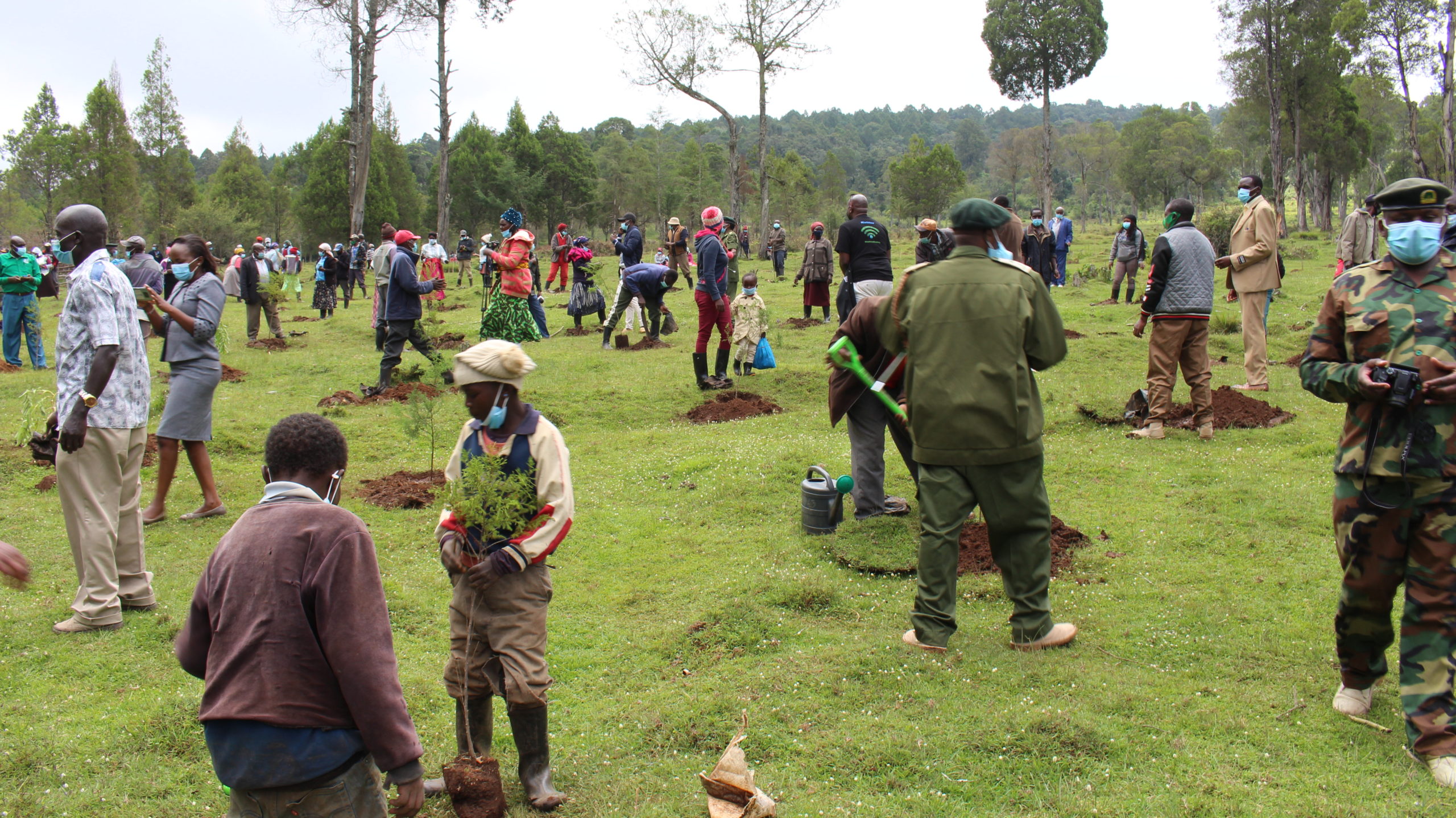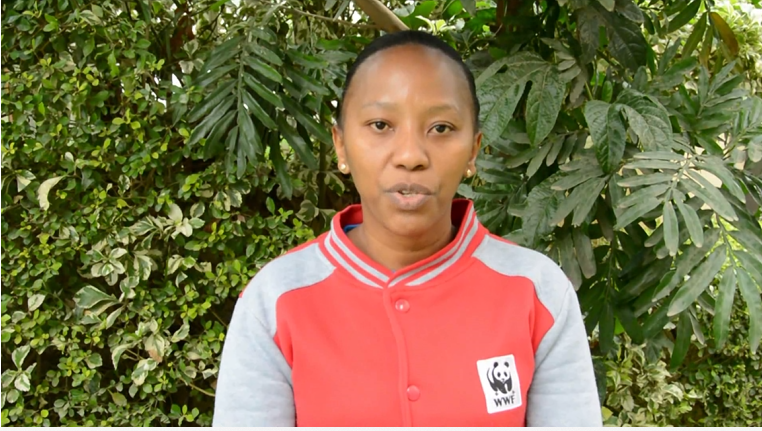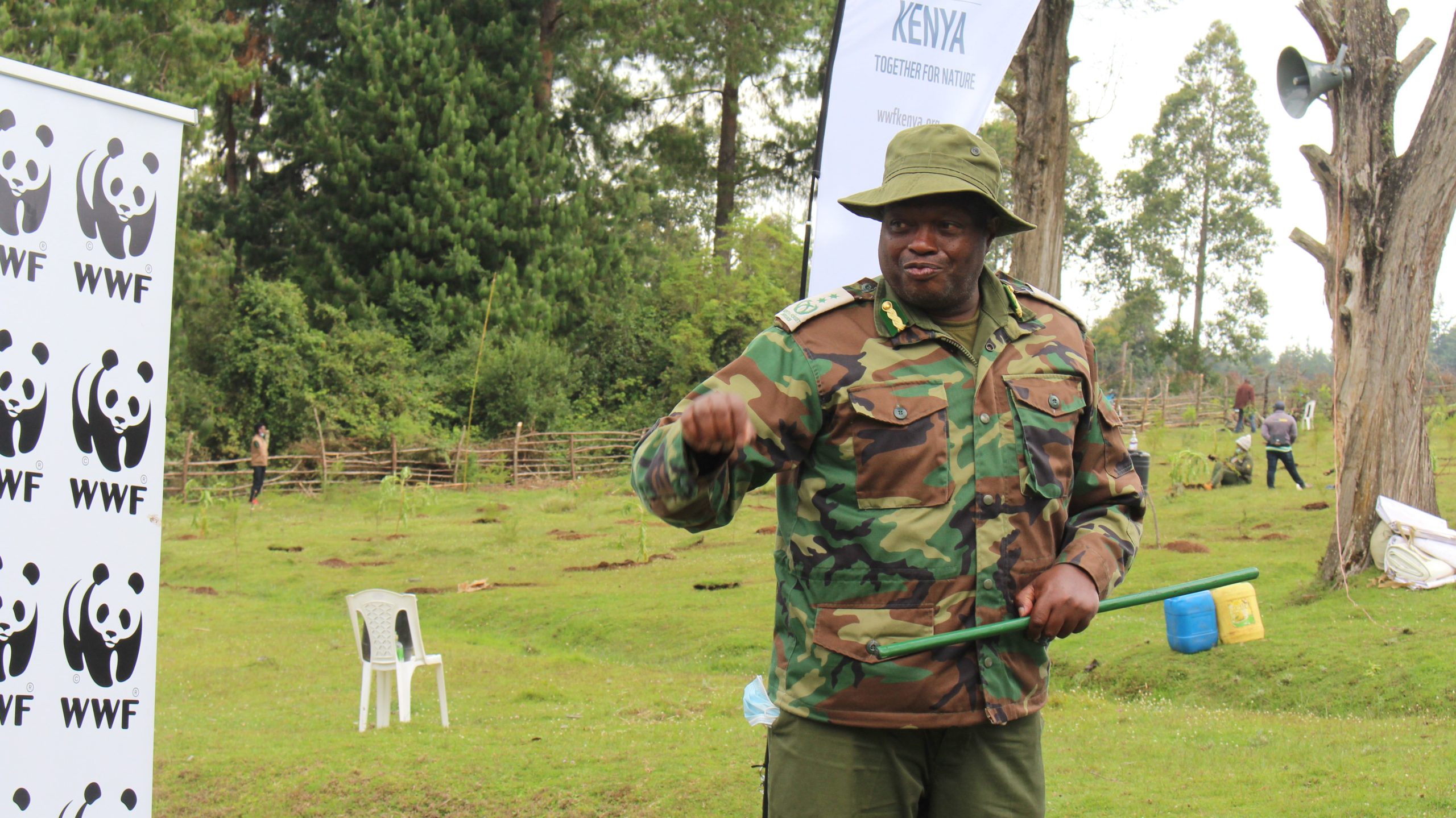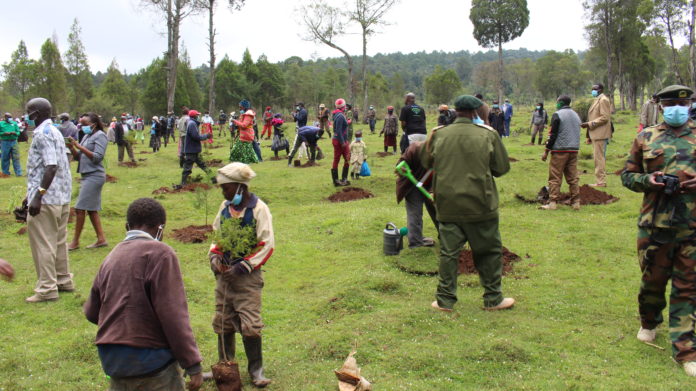By Clifford Akumu
Nairobi, Kenya: The vast tangled Aberdare forest that covers several counties in west-central Kenya remains one of the country’s priced water towers.
From its biodiverse ecosystems, the forest is a critical water catchment resource for both Rift Valley, Tana basin including Nairobi County.Aberdare ranges straddles across the counties of Nyandarua, Nyeri, Muranga, Kiambu and Laikipia.
In Geta forest, for example, that lies in Kiamweri village Nyandarua County and part of the Aberdare ecosystem, trees provide communities with resources from food to firewood, and are one of the most effective carbon sinks.
It is also a biodiversity hotspot with several species of plants and animals. Yet they continue to be destroyed and degraded. Deforestation continues to move deeper into the Aberdare rainforest.
Although most Kenyan mountain forests or ‘water towers’ had rich indigenous tree species, colonialists raided them for the precious hardwood, replacing them with cypress, pine, and eucalyptus plantations.
Water towers are crucial in capturing and regulating the flow of more than 75 percent of the country’s surface water. And so, its degradation leads to an effect on river flows and the supply of water to irrigation agriculture.
But now, conservationists hope that forest landscape restoration-which is proving far more successful at restoring these forests, will help turn the tide once and for all in the battle to save the indigenous species.
In efforts to restore the degraded area, Aberdare Kiburu Community Forest Association has planted over 75 hectares of indigenous species in the Geta, North Kinangop, and Aberdare Kiburu areas.
James Kariuki Karanja, chairman of the Aberdare Kiburu CFA explains that the association also practices beekeeping, eco-tourism, and fish rearing within the forest ecosystem.

Regaining lost glory
Mr. Karanja, leading a CFA that has 400 members, says the group is playing its part in helping the government increase the forest cover from 7.2 percent to 10 percent by 2022.
“When we started this program, the forest was degraded but today, through partnerships with other stakeholders it is slowly regaining its lost glory as we have rehabilitated over 100 hectares,” Karanja begins.
This catchment, continues Karanja, is a source for Turasha, Kariahu, and many streams draining into Lake Naivasha and since the CFA started the rehabilitation work, water flowing to the lake has increased.
Residents of the nearby Kiburu, Kiamweri villages too are also benefiting from improved water supplies thanks to the restoration of degraded Aberdare forest. “I now get clean water round the clock,” a happy Mary Njoki says as she opens a running tap in her compound in Kiburu village.
Some of the indigenous species that the group has planted include; Hagenia Abyssinia, Olea Africana, Prunus Africana, Juniperas Procera, Dombeya Goetzenii.
Indigenous seedlings are important for water conservation and are also good for wildlife habitat.
“Indigenous tree species such as mimondo, mitamayi, mikeu and meeri (in his native Kikuyu dialect) which we plant are very durable compared to the exotic ones which when cut leaves the area bare,” Karanja adds.
Mapping degraded areas
But how do the community members map the degraded sites in the forest?
“We first identify the degraded sites of the forest and we mark its boundaries. Through the training by our partners World Wildlife Fund we collect data using a mobile-based application with the support of GPS that is used for mapping purposes and feed to their offices.WWF officers later help us calculate the area for regreening with indigenous trees,” explains Karanja.
The community members have further trained on the planting systems suitable for the degraded areas among them agroforestry, woodlots. The areas mapped by the associations include forest areas (North Kinangop 171.7 Ha, Aberdare Kiburu 30.4 Ha, Geta 179.3 Ha. Total 381.23 Ha . Bamboo (Riparian) Wanjohi 12.5 Kms, Upper Turasha Kinja 1.5, Mkungi Kitiri 7.2 km) total 21.2 km and farmlands Upper Turasha 1.4 Ha.
Caroline Njiru, Program Coordinator for Naivasha Landscape at WWF explains that the project, “aims at preventing further deforestation and restoring functionality and connectivity of forest degraded landscapes.”
She notes that the Naivasha-Malewwa-Aberdares forest landscape is “a priority landscape for wildlife habitat and water tower.”
“Restoration of this forest will go a long way in enhancing water quality and quantity such as the water that flows into Lake Naivasha. For farmlands it will help increase productivity and also improve the catchment in general of this basin,” adds Njiru.

It is a five-year project funded by BMZ through the Bengo Facility and will run from 2020-2024, explains Njiru. (Funded by the German Federal Ministry for Economic Cooperation and Development (BMZ) through its BENGO climate-funding facility.
Kenya Forest Service has developed Kenya Forest and Landscape Restoration (FLR) Implementation Action Plan 2021–2025).
Njiru explains that the project consists of three major components including; restoration, improving livelihoods through agriculture and forest value chains, improving policy frameworks.
Apart from engaging in agricultural activities and tree planting within the forest as provided under the provisions of the Forests Act, the CFA also earns income from indigenous tree seedlings nurseries.
“We sell seedlings to individuals and non-governmental organizations like World Wide Fund (WWF-K). So far we have earned Sh1.2 million from the sale of the seedlings since this project started a year ago,” says Mr. Karanja.
Tree planting is conducted by the association members using indigenous trees from their own nurseries.
The project is also providing fruit trees for the farmlands restoration.
“Through a workable business model, we will identify buyers of the fruits. By this the farmers will contribute to the restoration and at the same time improve their livelihoods by selling the fruits from the trees,” adds Njiru.
Kenya committed to restoring 5.1million hectares of degraded and deforested landscapes for restoration by 2030, as a contribution to the African Forest and Landscape Restoration (AFRI100) initiative -a pan African, country-led effort to restore 100 million hectares of the deforested and degraded landscape.
And each of the 47 counties is expected to commit and adequately contribute to the attainment of the national target.
The FLR project is contributing to the target by restoring 500ha under mixed forest, 100 ha under farmlands, and 40 kilometers of riparian land with community forest associations.
“In both components, we involve the communities to protect and restore degraded forests, and to help them adopt sustainable approaches to forest resource use,” explains Njiru.
According to Global Forest Watch, in 2010 alone, Nyandarua had 72.0kha of natural forest, extending over 24 percent of its land area. In 2020, it lost 404ha of natural forest, equivalent to 208kt of CO₂ of emissions. Nyandarua County has a forest cover standing at 20 percent.
The officer adds that WWF-Kenya is working closely with Nyandarua County to come up with policies that will help inject more money into its budget to restore forest cover by enacting laws.
“We want continuity in this work and the best way is to partner with the county government so that they can continue with the work after the end of our program. We have brought an expert and held meetings with the Executive and hopefully by September Nyandarua will be the second county to have restoration strategy after Makueni,” says Ms. Njiru.
She continues: “The strategy is not focused on tree planting alone. A clean environment is one of the constitutional requirements. Once it is up and running it will be a big boost in terms of biodiversity around Aberdare catchment area as wildlife like elephants, will have a safe place to move on while birds will have a habitat they can stay.”
The project aims to work with 400 beneficiaries with 40 percent going to women. They will be supported to do restoration in the gazetted forests, farmlands.
Rethinking forest restoration
Rather than simply planting thousands of forests in the hope that they will grow, FLR looks at a holistic approach to tree survival monitoring.
“We not only focus on tree planting but we ensure the farmers participate in monitoring the trees through training on a real-time monitoring tool and dashboard. The farmers have been trained to collect tree survival and monitoring through open data key platform,” explains Njiru.
Monitoring of the trees is very important to ensure the survival rate is very high. It also enables us to replace the seedlings that haven’t survived.
“Community members are trained to understand the importance of the survival of the trees on their farms throughout is really important as much as they are getting benefits from these trees. It has enhanced survival rates of the trees and community ownership of the project,” notes Ms. Njiru.
Ms. Njiru noted that WWF-K has crafted a business module to help the community start a fruit farming venture.
“We are working with agriculture experts to establish which kind of fruit trees can grow in this area and have good market outlets. We want farmers to have a ready market, unlike in the past where they could plant any verities of fruits without knowing the market demand. The community should not be frustrated due to the lack of markets. With proper planning, we shall involve youths and women to ensure this business module is a success story,” she said.
A myriad of challenges
Mr. Samuel Ihura, head of central highlands forest conservancy, Kenya Forest Service confirms that some of the challenges in forest restoration include conflict with grazing communities, illegal logging for cedar posts.
Mr. Ihura adds that there are few degraded areas in the catchment areas in central Kenya. And he notes, “We have problems in areas where we have some invasive species that interfere with the regeneration of the forest.”
“This rehabilitation of the environment is very good. It is also encouraging to have this community here. We are encouraging farmers in the farmlands where there are peatlands to also practice rehabilitation and plant trees for domestic and industrial use so that we can reduce pressure from the exploitation of the forests.”

Although there are a few elements of theft especially for cedar posts in parts of the forestry Ihura adds, “We have been able to contain some of these illegal activities through tips we get from the community and other stakeholders. We continue to train the CFA’s on forest restoration.”














